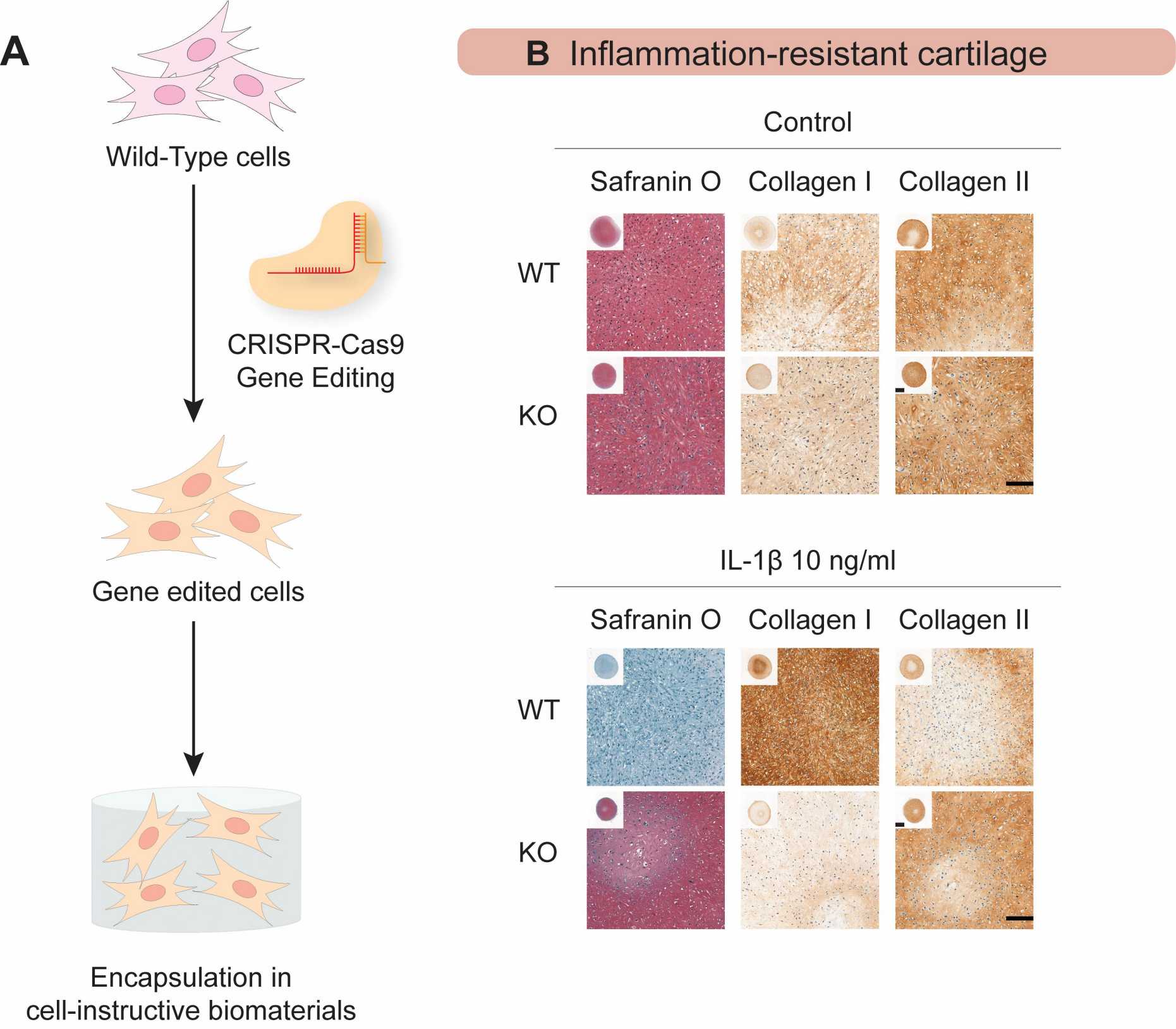Gene Editing
The CRISPR-Cas9 system is a powerful tool that enables the precise modification of a cell’s genome, allowing the modeling of molecular pathways toward a desired phenotype. By targeting specific genes, CRISPR-Cas9 facilitates both the deletion (knock-out) and insertion (knock-in) of genetic material. At the Zenobi-Wong group, we harness this cutting-edge technology to genetically engineer cells used in tissue engineering, with the ultimate goal of enhancing the function of tissues (Figure A). Relevant examples include the generation of inflammation-resistant cartilage able to withstand the inflammatory environment often present in conditions like osteoarthritis (Figure B), and the generation of edited MSCs with enhanced chondrogenic potential. Our work exemplifies the transformative impact of CRISPR-Cas9 technology in creating innovative therapeutic strategies.

- Streamlined, single-step non-viral CRISPR-Cas9 knockout strategy enhances gene editing efficiency in primary human chondrocyte populations, S Ponta, A Bonato, P Neidbach, VF Bruhin, A Laurent, LA Applegate M Zenobi-Wong & G Barreto, Arthritis Res Ther, 2024, external page https://doi.org/10.1186/s13075-024-03294-w
- Engineering Inflammation-Resistant Cartilage: Bridging Gene Therapy and Tissue Engineering, A Boanto, P Fisch, S Ponta, D Fercher, M Manninen, D Weber, KK Eklund, G Barreto, M Zennobi-Wong, Adv Healthc Mater, 2023,external page https://doi.org/10.1002/adhm.202202271
Contact
Gewebetechnol. und Biofabrikation
Otto-Stern-Weg 7
8093
Zürich
Switzerland